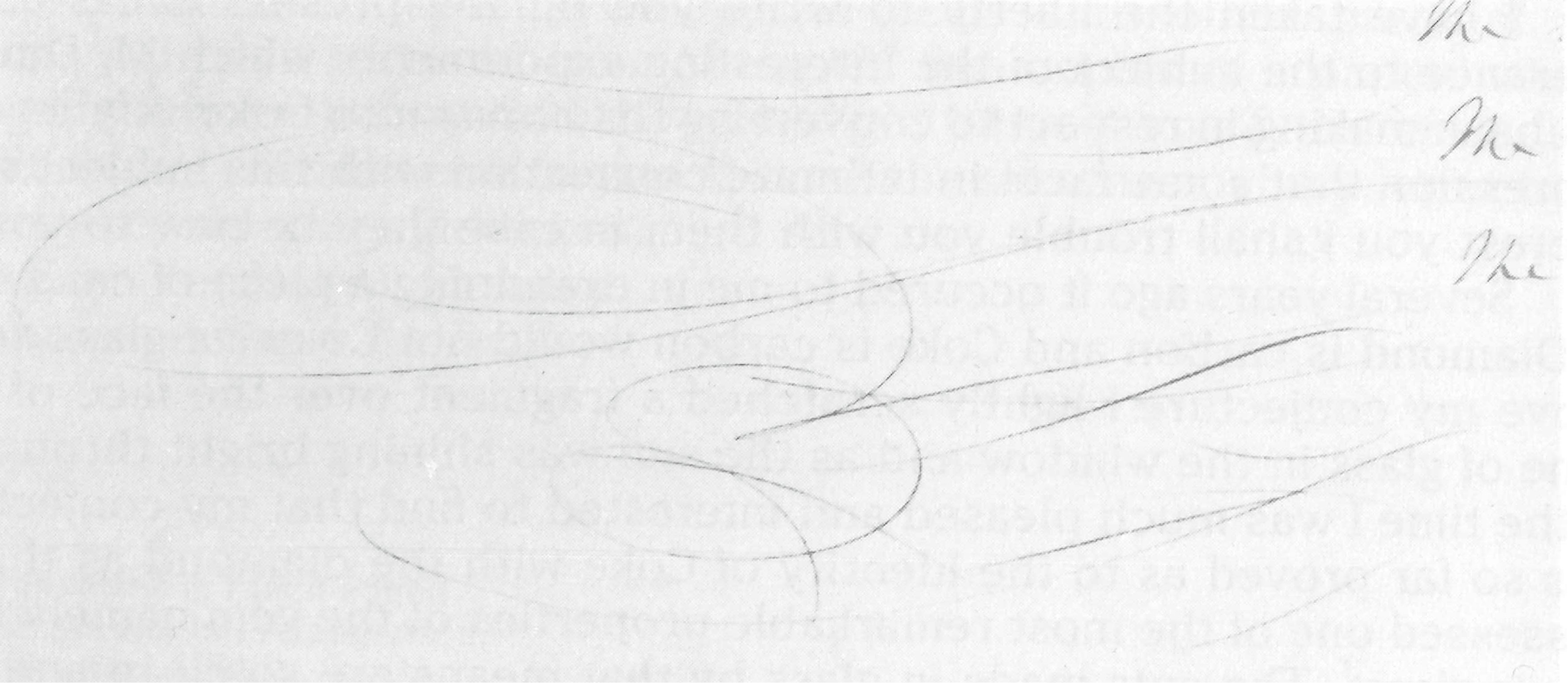James Nasmyth to Faraday 12 July 1847
Bridgewater Foundry, | Patricroft, near Manchester, July 12 1847
My Dear Sir
Many many thanks for your most kind and most valued letter of the 29 May1.
I have taken the liberty to write you on the present occasion in reference to the subject of the interesting experiments which M. Dumas has been making in respect to converting Diamonds into Coke2. Under the impression that some facts in intimate connection with this subject may interest you I shall trouble you with them in case they be new to you.
Several years ago it occured to me in examining a piece of coke that as Diamond is carbon and Coke is carbon would not Coke cut glass so to prove my conjecture I lightly scratched a fragment over the face of the pane of glass in the window and as the sun was shining bright through it at the time I was much pleased and interested to find that my conjecture was so far proved as to the identity of Coke with the diamond as that it possessed one of the most remarkable properties of the gem namely that it cuts glass3. The cuts made in glass by that means are so clean and cut like that they send forth the most beautiful prismatic colours as the rays of the sun happen to strike the plane of the cut at the suitable angle the appearance being exactly similar to that which we see produced by those infinitely delicate fillaments [sic] of the gossamers as they flaunt about in the tranquil air of a sunny autumn morning[.]
I enclose you a little morsel of coke so as you may put what I state to proof on the instant provided the sun be shining through your window. you need not fear destroying your Glass as the cuts are so fine and go but small way in but yet are perfect clean cuts quite of the Diamond cut family and not mere Scratches.
This "little fact" may peradventure interest you both on its own account and also as a converse proof of Identity of coke with Diamond - and I am inclined to think that in many processes in the arts that Coke Dust would prove to be a most valuable grinding if not polishing material for the Gem Cutters[.] I doubt not it would prove a most usefull and very economical substitute for Diamond Dust[.]
What say you to it as a material for Razor strops. no doubt a very humble application but one which would be no small contribution to the arts of civilization if it made razors do their duty as they sometimes will not do with all the magic powers of a veritable [word illegible].
I earnestly look forward to the happy time when I shall have more leisure to ask Dame nature a question or two toutching [sic] carbon in its various forms Especially in reference to its union with Iron which I am more than inclined to think is more in the condition of an alloy in the case of Steel than as a carburet.
I have to appologise [sic] to you for this intrusion on your valuable attention but perhaps you may feel interested in my small fact toutching [sic] the glass cutting property of Coke[.]
in making the Window Experiment with the enclosed bit of Coke you have only to Scratch it Lightly and at random in such figures as these

so as per Hap Hazard to get some of the minute christals [sic] or plates of the coke to be Edge ways with the direction of the motion of the Hand[.]
Believe me I am | most faithfully yours | James Nasmyth
M. Faraday Esq
Bibliography
JACQUELAIN, Victor Auguste (1847): “De l'action calorifique de la pile de Bunsen, du chalumeau à gaz oxygène et hydrogène sur le carbone pur, artificiel et naturel”, Comptes Rendus, 24: 1050-2.
NASMYTH, James (1848): “On a peculiar property of Coke”, Rep. Brit. Ass., 56.
Please cite as “Faraday2007,” in Ɛpsilon: The Michael Faraday Collection accessed on 30 April 2024, https://epsilon.ac.uk/view/faraday/letters/Faraday2007